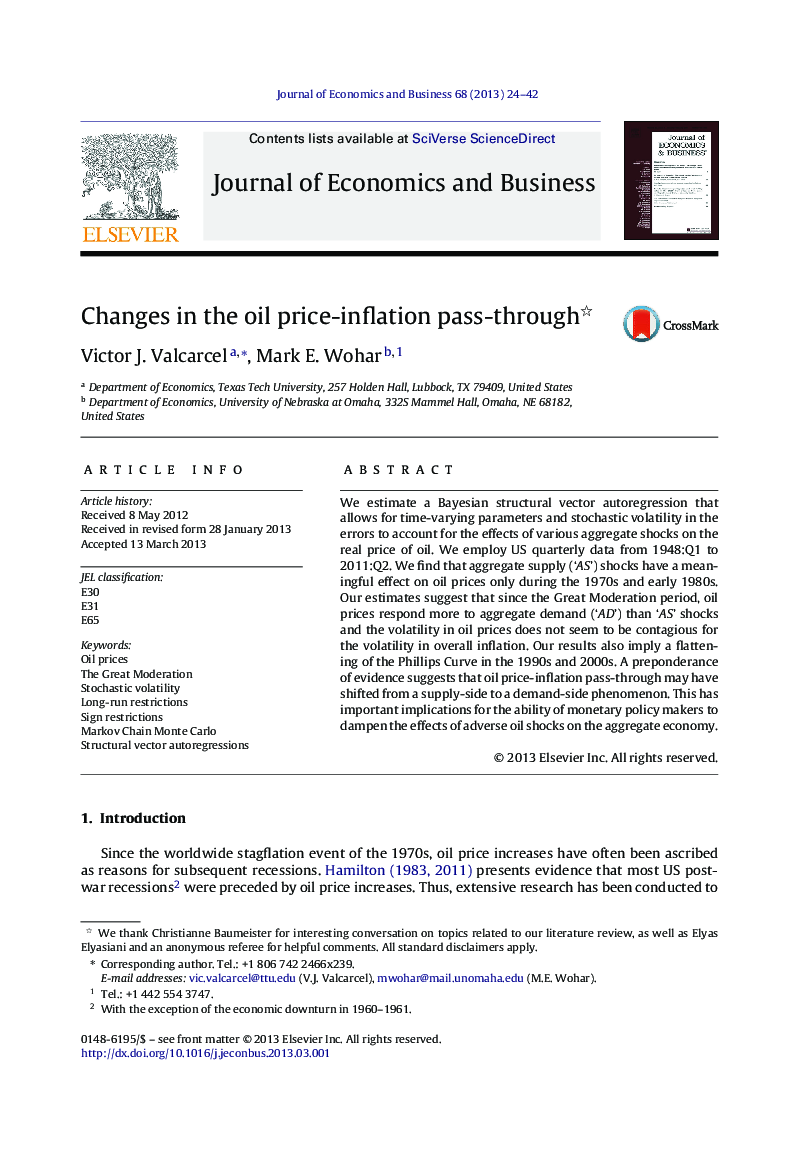| Article ID | Journal | Published Year | Pages | File Type |
|---|---|---|---|---|
| 957869 | Journal of Economics and Business | 2013 | 19 Pages |
•We estimate a TVP model to account for the effects of supply and demand shocks on real oil prices.•We find that supply shocks only have a meaningful effect on oil prices during the 1970s and 1980s.•Since the Great Moderation period oil prices respond more to aggregate demand shocks.•Volatility in oil prices does not seem to be contagious for volatility in overall inflation since the Great Moderation.•Results imply a flattening of the Phillips Curve in the 1990s and 2000s.
We estimate a Bayesian structural vector autoregression that allows for time-varying parameters and stochastic volatility in the errors to account for the effects of various aggregate shocks on the real price of oil. We employ US quarterly data from 1948:Q1 to 2011:Q2. We find that aggregate supply (‘AS’) shocks have a meaningful effect on oil prices only during the 1970s and early 1980s. Our estimates suggest that since the Great Moderation period, oil prices respond more to aggregate demand (‘AD’) than ‘AS’ shocks and the volatility in oil prices does not seem to be contagious for the volatility in overall inflation. Our results also imply a flattening of the Phillips Curve in the 1990s and 2000s. A preponderance of evidence suggests that oil price-inflation pass-through may have shifted from a supply-side to a demand-side phenomenon. This has important implications for the ability of monetary policy makers to dampen the effects of adverse oil shocks on the aggregate economy.
